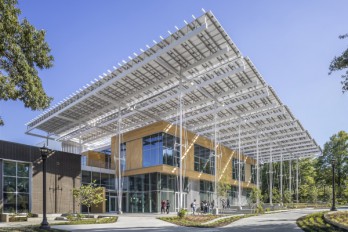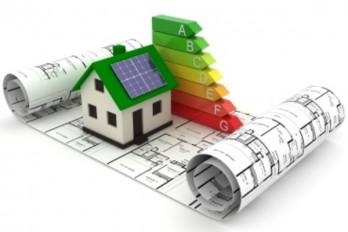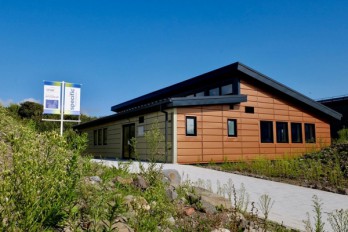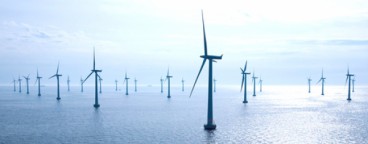Control building energy demand to preserve the electrical power resources

A new study conducted in the United States quantifies how the optimization of the consumed energy in buildings can increase the electrical power resources.
The power generation system is nowadays under significant reformations with the aim to become less dependent on fossil fuels and use more renewable energy. Moreover, scientists and experts emphasize the need for infrastructure to become more efficient and progressively utilize less power.
The impact of buildings' power consumption on this global endeavor is much more profound than anticipated. In the United States, 75% of the electricity is consumed in buildings, thus, even a small reduction in the power needs would result in saving valuable resources. The new study quantifies the grid resources from building efficiency and flexibility at the national scale taking into consideration time and space variables.
According to Jared Langevin, lead author of the study and a laboratory researcher at the University of California, Berkeley, the impact of the buildings on power consumption has not been adequately studied yet since it is very difficult to quantify it on a large scale. The aim of the research group was to find the factors that determine the electricity need of buildings and what intelligent measures can be used to reduce the consumption but not the quality of people's lives.
The study reveals that the most significant factors that control the power consumption for buildings are:
- Residential buildings: 1. Preconditioning: A technique that involves cooling buildings before the daily peak temperature is reached so that the need for air conditioning at that time will be reduced; and 2. The utilization of water source heat pumps.
- Commercial buildings: Plug Load Management: The management of the plug system through software. In many cases, plug loads are uncontrolled and consume power whether the equipment is used or not. This system aims at reducing unnecessary consumption via various systems (e.g., timers).
The largest grid resources in the United States were detected in the southeastern States, Texas, Mid-Atlantic regions and Great Lakes. Those regions are characterized by high population density, high electrical equipment and increased power demand.
By optimizing the aforementioned systems, the authors of the study suggest that billions of $ can be saved for both power suppliers and consumers. Most energy saving will be observed in peak hours or days as the buildings will be prepared to tackle the external, environmental factors. In particular, scientists expect that building efficiency techniques could reduce the annual power consumption by up to 742 TWh in 2030 rising to 800 TWh in 2050. Langevin highlighted the importance of the findings but also emphasized the need of putting these concepts into practice.
Sources: BerkeleyLab Langevin et al. (2021)
Sources: BerkeleyLab, Langevin et al. (2021)
Want to read more like this story?

The "living building" in Georgia Tech University
Apr, 22, 2021 | NewsGeorgia Tech announced on Earth Day 2021 that one large project, the Kendeda building has been...

The Internet of Things in building industry
Aug, 01, 2021 | NewsThe Internet of Things (IoT) is currently developed and can be applied to the building industry gene...
The prospects for carbon-neutral buildings
Oct, 27, 2023 | NewsIn the United Kingdom, buildings account for 33% of greenhouse gas emissions and 40% of global ener...

Best ways to reduce energy consumption in buildings
Apr, 14, 2016 | NewsPractices with greatest impact on energy conservation are under study Practices with greatest imp...

EU Parliament is updating the EU's rules to further improve the energy efficiency of buildings
Apr, 12, 2018 | NewsFrom January 1st, 2021, all new buildings in the EU should use little or no energy for heating, cool...

UK’s first energy-positive office opens in Swansea
Jul, 16, 2018 | NewsThe UK's first energy-positive classroom generates more than one and a half times the solar energy i...

Texas power outages persist
Feb, 19, 2021 | NewsThousands of households remain without electricity in Texas, as the state’s power grid operato...

Denmark hit a world record producing 42% of its electricity from wind
Feb, 16, 2016 | News2015 was another record-breaking year for Danish wind power In fact, Danish wind turbines generat...

Energy-efficient houses: Gas or Electric power?
May, 29, 2019 | NewsThe selection of fuel highly affects the cost and energy efficiency of houses. Is gas or electricity...
Trending

Vertical gardens in Mexico City to combat pollution

Saudi Park Closed After 360 Big Pendulum Ride Crashes to Ground, 23 injured

Characteristics of Load Bearing Masonry Construction

Taipei 101’s impressive tuned mass damper

Dutch greenhouses have revolutionized modern farming

Federal court rules Biden’s offshore drilling ban unlawful


